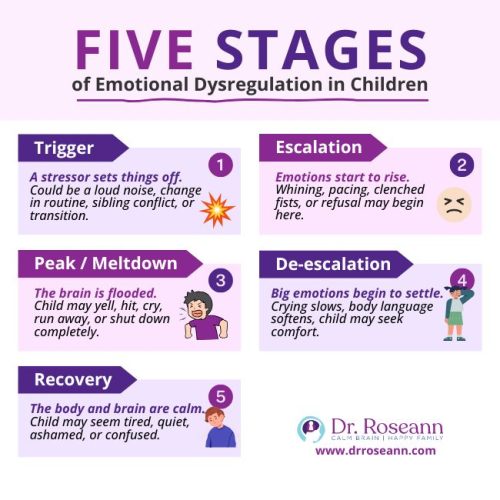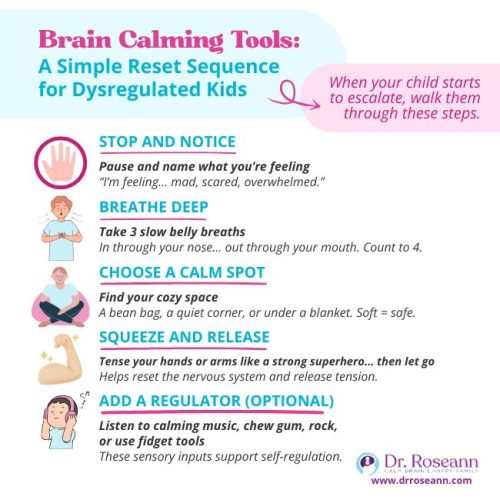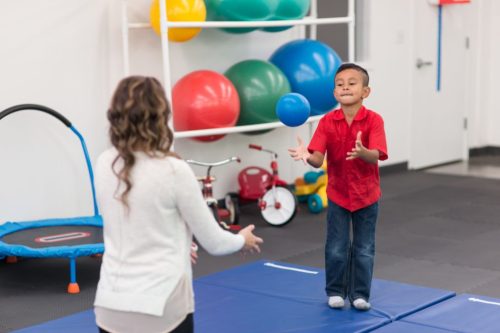Estimated reading time: 8 minutes
Feeling puzzled or worried when your child’s emotions suddenly explode? You’re not alone. This blog will help you spot the hidden emotional indicators of dysregulation in your child and give you practical tools to support them.
Let’s understand what dysregulated emotions look like, why small triggers can cause big reactions, and actionable steps to help your child (and you!) find calm.
What are the emotional indicators of dysregulation in children?
Kids with emotional dysregulation feel emotions very intensely and sometimes have trouble calming down. Their feelings can flip from happy to furious in seconds, and they often struggle to explain why they feel that way.
Common emotional indicators include:
- Mood swings: Rapid shifts between emotions like anger, sadness or anxiety.
One moment your child might be laughing; the next, they could be in tears for no clear reason. - Intense reactions: Explosive anger or frustration that seems out of proportion to the situation. For example, a dropped ice cream or a change in plans might trigger a meltdown.
- Difficulty calming down: Once upset, they stay upset for a long time. It can take hours or even days for them to fully bounce back, leaving them (and you) drained.
- Over-sensitivity: Being extra sensitive to criticism, mistakes or small frustrations. They may cry easily over little setbacks, or worry excessively about things that wouldn’t bother others.
- Quick guilt or shame: Feeling terrible after an outburst. Many dysregulated children immediately feel guilty, saying things like “I’m sorry” or “I’m bad,” even though it wasn’t their fault.
- Avoidance: Trying to avoid situations that might upset them. For example, they might refuse to go to school or avoid a sibling after a conflict.
These signs of dysregulation often come when the child is overwhelmed inside, even if they look okay on the outside. Think of it like an emotional tidal wave – it can rise very suddenly and feel impossible to control.
What’s happening in those moments?
As a child’s feelings spiral, their brain’s stress center takes over. “Behavior is communication,” as I always remind parents. When our kids can’t find the words, their feelings speak.
For example, 8-year-old Ethan would suddenly complain of a stomachache every morning before school – it wasn’t a tummy bug, but his anxious and dysregulated brain signaling stress to the body.
Emotional dysregulation isn’t a reflection of your child’s character or your parenting skills. It just means their little brains are having a hard time balancing all those big feelings.
How can I tell if it’s more than a tantrum or normal behavior?
All kids have tantrums, but dysregulation feels different. Tantrums are usually short-lived (think minutes, not hours) and often stop once the child gets what they want or enough attention. Dysregulation, on the other hand, lasts longer and feels more overwhelming.
| Feature | Tantrum | Emotional Dysregulation |
|---|---|---|
| Duration | Short (5–15 mins) | Can last a long time (30+ mins to hours); recovery may take longer |
| Trigger | Often specific and identifiable (e.g., denied request) | May appear random or disproportionate to the trigger |
| Emotional Control | Child is often still somewhat aware or goal-directed (“I want X”) | Child is overwhelmed and may seem “checked out” or unable to reason |
| Resolution | Ends when child gets need met or is distracted | Continues despite distraction or comfort attempts |
| Aftermath | Child moves on quickly | Child may feel shame, guilt, or become withdrawn |
| Parental Response | May work with redirection or ignoring | Requires co-regulation and emotional validation |
| Signs of Escalation | Predictable patterns (e.g., whining → yelling) | Can escalate suddenly with intense or even aggressive behavior |
| Emotional Tone | Frustrated or demanding | Anxious, flooded, ashamed, or scared |
Take Jennie, for example. Every time her son’s (Mark) puzzle pieces don’t fit, he loses it. Her friend initially advised her to “just ignore it” and consider it as like any other tantrum. However, Jennie saw that Mark’s sobbing and rage didn’t stop quickly. It continued even past his bedtime and he couldn’t talk about it without becoming agitated the next day.
Jennie realized this wasn’t merely misbehavior, but a sign of a dysregulated brain — a brain so overwhelmed and unable to cope.
Realizing that made all the difference. “It’s not bad parenting,” she reminded herself. “It’s a dysregulated brain.” That mindset shift helped her meet Mark with compassion instead of frustration.
Why do small triggers lead to big emotional reactions?
Sometimes, minor setbacks can feel like major disasters to a dysregulated child. A small change or frustration might be the last straw on a very full bucket of stress.
Common triggers include:
- Routine changes: Skipping a snack, a surprise schedule shift, or even going to bed late can tip the balance. “Young children might react to changes in routine,” notes child specialists, meaning something like switching breakfast foods or rearranging furniture can unexpectedly set them off.
- Sensory overload: Too much noise, bright lights, crowded places or even uncomfortable clothes can overwhelm their nervous system. For some kids, these sensory inputs make emotions boil over.
- Emotional stress: Any emotional ups and downs—sibling fights, worries about school, or family stress—add up. Dysregulated kids have a harder time letting go of these small anxieties.
- Physical needs: Hunger, tiredness or illness often magnify emotions. A child who’s tired from poor sleep might lose their patience more quickly than usual.
- Social pressures: As children grow, pressures at school or among friends can trigger mood swings. Teens, for instance, might explode over perceived social slights or embarrassment.

Example: Carlos notices that every afternoon after daycare, his 5-year-old Emma has a sudden outburst at home. It turns out Emma is just exhausted from a long day of activity.
Carlos started giving her a quiet break or a healthy snack right after school. This small change in routine prevented many meltdowns, showing that interrupting the trigger can stop the cycle before it peaks.
Are ADHD, anxiety or sensory issues linked to dysregulation?
Yes. Emotional dysregulation often overlaps with other conditions.
For example, children with ADHD, anxiety or autism frequently struggle more with big emotions. This isn’t their fault—it’s how their brains are wired.
- ADHD: Kids with ADHD may feel emotions more intensely and have trouble “braking” their reactions. They might explode quickly because impulse control is harder for them.
- Anxiety/OCD: A constantly anxious brain is on high alert, so even small stress can trigger an outsized response. Children with anxiety or OCD may get very upset over changes or perceived “threats.”
- Autism/Sensory Issues: Children on the autism spectrum often have sensory sensitivities and social challenges, making emotional regulation tough. Loud noises or unexpected changes can hit them harder for them.
New research reinforces the importance of early emotional regulation
- A 2025 study found that preschoolers who often had meltdowns or trouble calming down were much more likely to show signs of ADHD, behavior issues, and anxiety by age seven—even when early behavior problems were already taken into account.(Becker et al., 2025).
- Another 2025 study found that when autistic children were taught to use self-talk (like saying calming words to themselves), they got better at handling big emotions. The researchers said that clear emotional guidance helped kids become more aware of their feelings and have fewer outbursts.(Williams et al., 2025).
That said, any child can experience dysregulation, not just those with a diagnosis. Sometimes dysregulation is a standalone challenge or a result of stress or trauma. The key is understanding and support.
What can I do to help my child calm down and cope?
Remember: behavior is communication. Big feelings call for comfort and brain-soothing more than punishment. Here are science-backed, heart-based strategies:
- Stay calm and connected: When your child is losing it, your calm presence is their anchor. Speak softly, even if they’re yelling. Hold their hand or give a gentle hug if they allow. Let them know you’re there for them, not against them. This calm modeling literally helps their brain settle.
- Validate their feelings: Say things like, “I see you’re really angry (or scared) right now. That must feel very big.” Avoid shaming or dismissing (“You’re fine, stop crying.”). Kids need to feel understood first. It’s not about giving in, it’s about co-regulating
- Offer simple choices: Giving a child a tiny bit of control can reduce panic. You might say, “Do you want a cold drink or a favorite toy while we talk about this?” Even small choices can ease frustration.
- Use grounding techniques: When a child is spiraling, help them focus on the here-and-now. “Let’s take 3 big deep breaths together,” or feel their feet on the ground. You can even do silly actions (e.g. look at a light and name colors) to break the tension. These tricks calm the brain first.
- Narrate the emotion after it passes: Once they’re calmer, help them label what happened. “That was a huge wave of anger. You looked so upset!” Naming the feeling can help them understand and recover.
Takeaways:
- Validate before problem-solve: You can’t fix feelings until the storm passes. Wait until your child is calm to talk.
- Be consistent: Predictable routines and gentle limits give a sense of safety.
- Teach coping tools: Practice calm-down skills together (deep breathing, counting, squeezing a stress ball) when your child is calm so they learn to use them.

When should I consider getting professional help?
First, it’s never a failure to ask for help – think of it as getting advice from an experienced guide when the map looks confusing. You might seek extra support if:
- The outbursts are daily or extreme: If your child’s emotions are flipping every day, or if outbursts include self-harm, violence or lasting shutdown, it’s time to get professional guidance.
- School and relationships suffer: When dysregulation causes grades to plummet or friendships to break, it’s a clear sign they need more tools than you have right now.
- You feel stuck or overwhelmed: If you try everything and still feel helpless, that stress can actually make things worse at home. “Behavior is communication,” remember – your stress signals to your child too. Finding a therapist or pediatric specialist can give you both support.
Mental health experts (like child psychologists or psychiatrists) can help you rule out underlying issues and teach you specific strategies. Sometimes, conditions like ADHD, autism, or mood disorders are at play and need targeted therapies. Early intervention is key.
AACAP explains that frequent, intense tantrums can signal an underlying issue: “What is actually observed … is broad and persistent emotional dysregulation”. In other words, if this is more than a phase, trust your instincts. Seeking an evaluation can give you a clearer picture and peace of mind.
Note: Seeking help doesn’t mean “giving up” – it means arming yourself with more tools. The right therapist will empower you, not judge you. In fact, many therapists train parents in co-regulation techniques, so you and your child become a stronger team.
How can I communicate and stay supportive during a meltdown?
In the eye of the storm, the most important thing is connection over correction. Here’s what to do:
- Stay present: Make eye contact if possible and drop your agenda. Put everything aside to just be there. You might quietly say, “I’m right here, I won’t leave you.”
- Avoid rationalizing: Now is not the time for logic or discipline. (Save “You need to calm down” for later when things are calm.) In the moment, feel with them. If they are crying, cry with them. If they are angry, mirror a soft anger back (“It does feel really unfair, doesn’t it?”).
- Use simple language: If the child can respond, use one-step gentle commands: “Take a deep breath. I’m here. You’re safe.” Keep sentences short – when brains are flooded, too many words can confuse.
- After the storm: Once your child has returned to baseline (this could be minutes or hours later), gently check in: “What was really upsetting you just now? How can I help next time?” Use I-messages: “I felt scared when you were yelling. I want to help you feel better.”
Remember, you’re not alone in this. Every parent in Dr. Roseann’s practice starts exactly where you are: worried and uncertain.
The fact that you’re reading this means you care deeply. With each moment of empathy and each calm breath you model, you are helping your child’s brain learn a new way to respond. It is gonna be OK, even if it’s a bumpy path right now.
Parent Action Steps
FAQs
How do I know if it’s time to seek professional help?
If your child’s meltdowns are frequent, intense, or affecting daily life at home or school—it’s time. Trust your gut. You don’t need to wait for things to get worse.
Who should I talk to first if my child is emotionally dysregulated?
Start with a trusted pediatrician or a licensed mental health provider who understands brain-based disorders. If you’re unsure, begin with a brain map or a parent consultation to understand what’s really going on.
How long does it take to see progress with emotional dysregulation?
There’s no one-size-fits-all. With the right tools and support, some families see small wins in a few weeks. Long-term change comes from consistency and co-regulation—not quick fixes.
What should I do if nothing seems to help my child’s emotional dysregulation?
That doesn’t mean nothing will. Some kids need nervous system support first—like magnesium, PEMF, or neurofeedback—before behavior tools can stick. Keep going, and don’t be afraid to get help.
Will my child eventually grow out of emotional dysregulation?
Not always. Many dysregulated kids need direct support to learn self-regulation. Without it, these struggles often continue into adolescence and adulthood—but with it, change is absolutely possible.
Is emotional dysregulation dangerous for my child?
Dysregulation itself isn’t dangerous, but it can lead to unsafe behaviors like aggression or self-harm if left untreated. Addressing it early reduces long-term risks and helps your child feel safe in their own body.
Is my child’s emotional dysregulation my fault?
No. Dysregulation isn’t caused by “bad parenting.” It’s a brain issue—not a discipline issue. The fact that you’re here means you’re already doing something right.
Citations
Becker, S. P., Lunkenheimer, E. S., Davis, A. L., & McLaughlin, K. A. (2025). Early emotion regulation predicts later ADHD, conduct, and anxiety symptoms: A 4-year longitudinal study. Development and Psychopathology, 37(3), 520–534. https://doi.org/10.1017/S0954579425000123
Gabriels, R. L., Agnew, J. A., Beresford, C., & Wamboldt, M. Z. (2021). The importance of emotion regulation in understanding challenging behaviors in children with autism and other neurodevelopmental disorders. Journal of Autism and Developmental Disorders, 51(2), 459–472. https://doi.org/10.1007/s10803-020-04538-4
Eisenberg, N., Spinrad, T. L., & Valiente, C. (2016). Emotion-related self-regulation and its relation to children’s maladjustment. Annual Review of Clinical Psychology, 12, 167–197. https://doi.org/10.1146/annurev-clinpsy-021815-093335
Dr. Roseann Capanna-Hodge is a licensed mental health expert that is frequently cited in the media:
- Scary Mommy: “What Is Self-Regulation in Children, And How Can You Help Improve It?”
- USA Today: “How to Build Emotional Intelligence in Your Child”
- Homeschool OT Therapy Services: Understanding nervous system dysregulation in children
Disclaimer: This article is not intended to give health advice and it is recommended to consult with a physician before beginning any new wellness regime. *The effectiveness of diagnosis and treatment vary by patient and condition. Dr. Roseann Capanna-Hodge, LLC does not guarantee certain results.
Are you looking for SOLUTIONS for your struggling child or teen?
Dr. Roseann and her team are all about science-backed solutions, so you are in the right place!
Get our 7-day science-backed mini course reset to calm your child’s brain:








